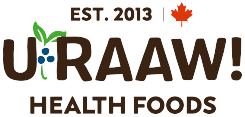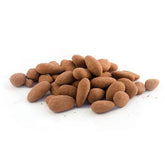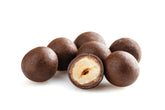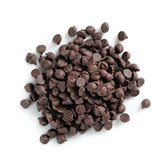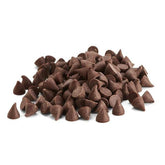Chocolate Covered
Got a craving? Our healthy and organic chocolate covered fruits and nuts are the perfect way to indulge (in moderation, of course), without feeling guilty.
Health Benefits of Chocolate
- Dark chocolate is not only delicious, but the cacao found in dark chocolate is a superfood that has many health benefits.
- Cacao rich in fiber, iron, magnesium, copper, manganese and a few other minerals.
- Cacao is loaded with powerful compounds that act as antioxidants, such as polyphenols, flavanols and catechins. In fact, has the highest concentration of flavanols out of all foods per weight.
- Flavanols are antioxidants that can protect cells against damage from reactive molecules which in turn slows down the aging of cells and reduces inflammation.
- The flavanols in cacao are thought to improve nitric oxide levels in the blood, which can enhance the function of your blood vessels and reduce blood pressure.
- Cacao can lower the susceptibility of LDL (“bad” cholesterol) to oxidative damage while increasing HDL (“good” cholesterol).
- Can reduce heart disease risk and stroke.
- Cacao polyphenols increase blood flow to the brain and improve cognitive function.
- Eating flavanol-rich dark chocolate or cocoa can reduce insulin sensitivity, improve blood sugar control and reduce inflammation in diabetic and nondiabetic people.
Combine the health benefits of chocolate with that of superfood nuts and dried fruits, and you’ve got a decadent AND healthy treat!
- Cacao polyphenols have been shown to contribute to sun protection, skin blood circulation, and improve the surface texture and hydration of your skin.
- The flavanols in dark chocolate may improve vision by increasing blood flow to the retina.
- Theobromine, a chemical found in cacao, may help control your cough by decreasing the effects of the vagus nerve.
- Dark chocolate can boost immune system. Its flavanols are anti-inflammatory, beneficial for specific cells that produce antibodies, and helps lymphoid organs produce cells more effectively which leads to better defense against diseases.
- Cacao has a positive effect on mood which may be due to cacao’s flavanols. The chemicals theobromine and anandamine can be an energy- and mood-booster. Phenethylamine is another chemical found in cacao that helps produce serotonin, which is one of the “happiness hormones”.
Product Features
- All of our chocolate covered treats are made with at least 70% high quality dairy-free dark chocolate to ensure you are getting a good dose of those antioxidant polyphenols.
- Our products are also Certified organic, Gluten-Free, Dairy–Free, Vegan, Non-GMO, Raw.
- We combine the benefits of delicious dark chocolate with the yummy and satisfying crunch of organic nuts and delicious chew of organic dried fruit.
How to Enjoy our Chocolate Covered Treats
- Straight out of the bag! (For you no-fuss indulgers)
- Add some to your trail mixes for an indulgent surprise per handful.
- Chop them up and top your desserts, smoothie bowls, and yogurt.
Sometimes you just want to have that decadent treat, but you want something healthy, too. You don’t have to choose between one or the other with our snacks. We’ve got you (dark-chocolate) covered! So go ahead...treat yourself!
